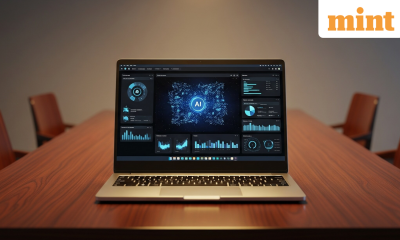
Metaverse
Our early-adopters index examines how corporate America is deploying AI – Crypto News
View Full Image
The main reason for the surge is the promise of artificial intelligence (AI). Since the launch in November of ChatGPT, an AI-powered chatbot, investors have grown ever more excited about a new wave of the technology that can create human-like content, from poems and chunks of code to video footage. This “generative AI” relies on large-language models which are “trained” on large chunks of the internet. Many think the technology could reshape entire industries and have as much impact on business and society as smartphones or cloud computing. Firms that can make the best use of technology, the thinking goes, will be able to expand profit margins and gain market share.
Corporate bosses are at pains to demonstrate how they are adopting AI. On April 4th Jamie Dimon, JPMorgan Chase’s boss, said his bank had 600 machine-learning engineers and had put AI to work on more than 300 different internal applications. David Ricks, the boss of Eli Lilly, has said that the pharmaceutical giant has more than 100 projects on the go using AI. Howard Schultz, who recently stood down as boss of Starbucks, had said he planned to invest $1bn to use AI to figure out how to make the perfect vegan breakfast sandwich to accompany the coffee the firm sells.
Company case studies reveal only part of the picture. To get a broader sense of which companies and industries are adopting AI The Economist examined data on all the firms in the S&P 500. We looked at five measures: the share of issued patents that mention AI; venture-capital (VC) activity targeting AI firms; acquisitions of AI firms; job listings citing AI; and mentions of the technology on earnings calls. Because other types of AI could bring benefits to business, our analysis captures activity for all AI, not just the generative wave. The results show that even beyond tech firms the interest in AI is widespread and growing fast. Moreover, clear leaders and laggards are already emerging.
Start with the growing interest. AI expertise already seems to be spreading widely. About two-thirds of the firms in our universe have placed a job ad mentioning AI skills in the past three years says PredictLeads, a research firm. Of those that did, today 5.3% of their listed vacancies mention AI, up from a three-year average of 2.5%. In some industries the rise is more dramatic (see chart 2). In retail firms that share has jumped from 3% to 11%, while among chipmakers that proportion grew from 9% to 19%.

View Full Image
The number of AI-related patents trended up between 2020 and 2022, based on data provided by Amit Seru of Stanford University. PitchBook, another research firm, concludes that in 2023 some 25% of venture deals by S&P 500 firms involved AI startups, up from 19% in 2021. GlobalData, also a research firm, finds that about half the firms scrutinized have talked about AI in their earnings calls since 2021 and that in the first quarter of this year the number of times AI was mentioned in the earnings calls of America Inc more than doubled compared with the previous quarter. Roughly half have been granted a patent relating to the technology between 2020 and 2022.
The use of generative AI may eventually become even more common that other types of AI. That is because it is good at lots of tasks essential to running a firm. A report by McKinsey, a consultancy, argues that three-quarters of the expected value created by generative AI will come in four business functions—research and development, software engineering, marketing and customer service. To some extent, all these operations are at the core of most large businesses. Furthermore, any large company with internal databases used to guide employees could find a use for an AI-powered chatbot. Morgan Stanley, a bank, is building an AI assistant that will help its wealth managers find and summarize answers from a huge internal database. SLB, an oil-services company, has built a similar assistant to help service engineers.
While the adoption of AI is happening among many firms some are more enthusiastic than others. Ranking all the companies using each metric and then taking an average produces a simple scoring system. Those at the top seem to be winning over investors. Since the beginning of the year, the median share price of the top 100 has risen by 11% while for the lowest-scoring quintile it has not moved at all.
The top spots are unsurprisingly dominated by Silicon Valley. On a broad definition, the S&P 500 contains 82 tech firms. Almost 50 of them make the top 100. Nvidia is the highest-scoring firm. According to data from PredictLeads, over the past three years a third of its job listings have mentioned AI. In the past year the firm has mentioned AI in its earnings calls almost 200 times, more than any other company. Other high-ranking tech firms include the cloud-computing giants—Amazon (34th), Microsoft (12th) and Alphabet (3rd). They sell access to a range of AI tools, from services that help train sophisticated models to software that lets you use AI without having to write reams of code.
Beyond tech, two types of firms seem to be adopting AI the fastest. One is data-intensive industries, such as insurers, financial-services firms and health-care providers. They account for about a quarter of our top 100. These firms tend to have lots of structured datasets, such as loan books or patient files, which makes it easier to use AI, notes Ali Ghodsi of Databricks, a database firm. Around a tenth of JPMorgan Chase’s current job listings mention AI. The firm recently filed a patent for “IndexGPT”, an AI-infused chatbot that gives investment advice. Health-care firms like Gilead Sciences and Moderna use AI to discover new drugs. Others, such as Abbott Laboratories and Align Technology, build AI- powered medical devices. America’s Food and Drug Administration approved 97 such machines last year, up from 26 in 2017.
A second group is industries that are already being disrupted by technology, including carmakers, telecoms, media and retail. Thirteen firms from these industries make the high-scoring 100, including Ford, GM and Tesla. The rise of electric vehicles and the prospect of self-driving cars has encouraged vehicle manufacturers to invest in the technology. In March Ford established Latitude AI, a self-driving car subsidiary that might one day rival GM’s Cruise. In April Elon Musk told analysts that Tesla was buying up specialized AI chips and was “very focused” on improving their AI capabilities in an effort to improve its autonomous-driving efforts.
Retail firms are using AI to bolster their core business. Nike, a sportswear giant, filed an application for a patent in 2021 for a system that can generate three-dimensional computer models of trainers. Christian Kleinerman, of Snowflake, a database provider, notes that retail firms are also taking advantage of the growth of e-commerce by collecting more data on customers. That allows more accurate targeting of marketing campaigns. Some may take personalization a step further. In 2021 Procter & Gamble, a consumer-goods giant, applied for a patent for an AI-based system which analyzes users’ skin and hair conditions based on photos, and recommends products to treat them.
One source of variation in AI use across industries may be a result of the type of work undertaken. A working paper led by Andrea Eisfeldt of the University of California looked at how exposed firms are to AI. The researchers assessed which tasks took place in a firm and how well ChatGPT could perform them. The most exposed were tech firms, largely because AI chatbots are good at coding. Those industries least exposed tended to rely on manual labor, such as agriculture and construction.
There are also clear leaders and laggards within industries too. Some 70 firms in the S&P 500 show no sign on any of our metrics of focusing on AI. That includes firms in AI-heavy industries, such as insurers and health-care firms. One distinguishing factor within industries may be investment. For the top 100 firms of our ranking, the median R&D expenditure as a share of revenue was 11%. For those in the lowest 100 it was zero.
Vlad Lukic, of BCG, a consultancy, notes that there is even a lot of variation within companies. He recalls visiting two divisions of the same medium-sized multinational. One had no experience working with AI. The other was advanced; it had been using a pilot version of OpenAI’s technology for two years.
Many non-tech companies’ AI use is growing more sophisticated. Mr Seru’s data reveal that about 80 non-tech firms have had AI-related patents issued which were cited by another patent, suggesting that they have some technological value. Some 45 non-tech companies in the S&P 500 have recently placed ads which mention model training, including Boeing, United Health and State Street. That suggests they may be building their own models rather than using off-the-shelf technology from the likes of OpenAI. The advantage of this approach is that it can produce more-accurate AI, giving a greater edge over rivals.
However, a shift to in-house training hints at one of the risks: security. In May Samsung discovered that staff had uploaded sensitive code to ChatGPT. The concern is that this information may be stored on external servers of the firms which run the models, such as Microsoft and Alphabet. Now Samsung is reportedly training its own models. It also joined the growing list of firms that banned or limited the use of ChatGPT, such as Apple and JPMorgan Chase.
Other risks abound. Model makers, including OpenAI, are being sued for violating copyright laws over their use of internet data to train their models. Some large corporations think that they could be left liable if they use OpenAI’s technology. Furthermore, models are prone to make up information. In one incident a New York lawyer used ChatGPT to write a motion. The chatbot included fictional case-law and the lawyer was fined by the court.
But all this must be weighed against the potential benefits, which could be vast. Waves of technology frequently turn industries on their heads. As generative AI diffuses into the economy, it is not hard to imagine it doing the same thing. Mr Lukic says that the biggest risk for companies may be “falling behind”. Judged by the scramble in America Inc for all things AI, many bosses and investors would agree.
To stay on top of the biggest stories in business and technology, sign up to the bottom lineour weekly subscriber-only newsletter.
© 2023, The Economist Newspaper Limited. All rights reserved. From The Economist, published under license. The original content can be found on www.economist.com
Catch all the business news, market news, breaking news Events and Latest News Updates on Live Mint. Download Mint News App to get Daily Market Updates.
Updated: 26 Jun 2023, 02:20 PM IST
-

 Cryptocurrency1 week ago
Cryptocurrency1 week agoVanEck’s Solana ETF nears launch after SEC 8-A filing – Details – Crypto News
-

 Cryptocurrency1 week ago
Cryptocurrency1 week agoVanEck’s Solana ETF nears launch after SEC 8-A filing – Details – Crypto News
-

 De-fi1 week ago
De-fi1 week agoZEC Jumps as Winklevoss‑Backed Cypherpunk Reveals $100M Zcash Treasury – Crypto News
-
Business1 week ago
December Fed Meeting 2025: Rate Cut or Hold? Key levels to Watch – Crypto News
-

 Metaverse1 week ago
Metaverse1 week agoClaude Desktop is your new best friend for an organized PC – Crypto News
-

 De-fi1 week ago
De-fi1 week agoKraken’s xStocks Hit $10B in Total Trading Volume – Crypto News
-
others1 week ago
December Fed Meeting 2025: Rate Cut or Hold? Key levels to Watch – Crypto News
-

 Metaverse1 week ago
Metaverse1 week agoClaude Desktop is your new best friend for an organized PC – Crypto News
-

 Metaverse1 week ago
Metaverse1 week agoYour deep research tool may save you time, but can it save you embarrassment? – Crypto News
-

 Cryptocurrency1 week ago
Cryptocurrency1 week agoXRP’s Big Moment? Why Nov. 13 Could Be the Day Ripple Investors Have Waited For – Crypto News
-

 Technology6 days ago
Technology6 days agoPerplexity faces harsh crowd verdict at major San Francisco AI conference: ‘Most likely to flop’ – Crypto News
-
Technology5 days ago
Japan’s ¥17 Trillion Stimulus Plan: A Turning Point for Global Liquidity Shifts – Crypto News
-

 De-fi1 week ago
De-fi1 week agoXPL Rallies After Plasma Reveals Collaboration with Daylight Energy – Crypto News
-

 De-fi1 week ago
De-fi1 week agoSKY Surges 14% as Savings TVL Passes $4 Billion – Crypto News
-

 Cryptocurrency1 week ago
Cryptocurrency1 week agoUAE makes Bitcoin wallets a crime risk in global tech crackdown – Crypto News
-
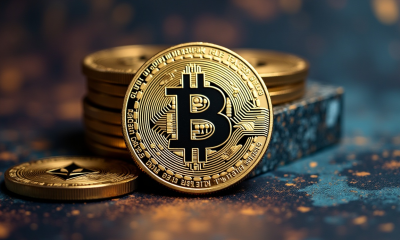
 Cryptocurrency5 days ago
Cryptocurrency5 days agoCrypto update: Bitcoin ETFs see $300M inflow as investors ‘buy the dip’ – Crypto News
-
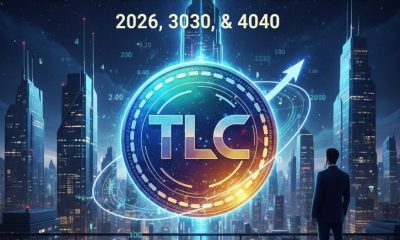
 Cryptocurrency4 days ago
Cryptocurrency4 days agoTLC Coin Price Prediction 2026, 2030, &2040: Trillioner Forecast » InvestingCube – Crypto News
-

 De-fi1 week ago
De-fi1 week agoTrump Tokens Outperform After US President Teases ‘Tariff Dividends’ – Crypto News
-
others1 week ago
Hyperliquid Halts Deposits and Withdrawals Amid POPCAT Liquidation Saga – Crypto News
-
Business1 week ago
Hyperliquid Halts Deposits and Withdrawals Amid POPCAT Liquidation Saga – Crypto News
-
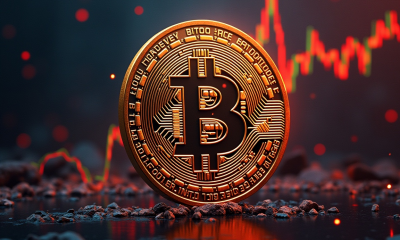
 Cryptocurrency1 week ago
Cryptocurrency1 week agoBitcoin (BTC) battles macro headwinds despite improved ETF inflows – Crypto News
-

 Cryptocurrency1 week ago
Cryptocurrency1 week agoAI-driven phishing scams and hidden crypto exploits shake Web3 security – Crypto News
-

 Blockchain1 week ago
Blockchain1 week agoWhy the Future of Blockchain Payments Could Stay Narrow – Crypto News
-

 De-fi7 days ago
De-fi7 days agoBitcoin Drops to $94,000 Following Second-Largest Daily ETF Outflows – Crypto News
-

 De-fi7 days ago
De-fi7 days agoBitcoin Drops to $94,000 Following Second-Largest Daily ETF Outflows – Crypto News
-

 Cryptocurrency5 days ago
Cryptocurrency5 days agoCrypto market’s weekly winners and losers – TEL, STRK, ICP, CC – Crypto News
-

 Technology5 days ago
Technology5 days agoAI chatbots like ChatGPT and Gemini may be ‘bullshitting’ to keep you happy, new study finds – Crypto News
-
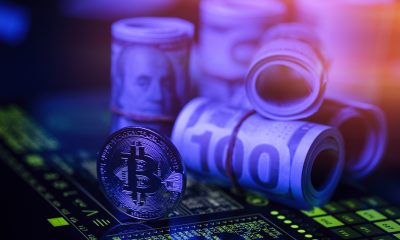
 Blockchain5 days ago
Blockchain5 days agoBitcoin Indicator Sounds Buy Alarm For The First Time Since March — Return To $110K Soon? – Crypto News
-
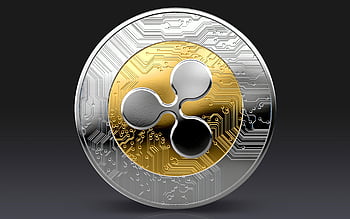
 Blockchain4 days ago
Blockchain4 days agoBlackRock XRP ETF Speculation Hit New Highs As XRPC Performance Shocks Markets – Crypto News
-
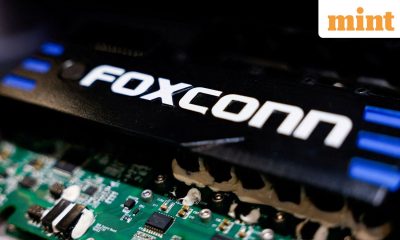
 Metaverse1 week ago
Metaverse1 week agoFoxconn reports strong Q3 profit driven by AI server boom, teases OpenAI announcement – Crypto News
-

 De-fi1 week ago
De-fi1 week agoFlare TVL Nears Record High as Firelight Teases XRP Liquid Staking – Crypto News
-

 Cryptocurrency7 days ago
Cryptocurrency7 days agoCoinbase Exec Blasts Banking Lobby’s Stablecoin Push as ‘Unamerican’ Overreach – Crypto News
-

 Blockchain5 days ago
Blockchain5 days agoA16z’s Sees Arcade Tokens As Key To Crypto Evolution – Crypto News
-

 Cryptocurrency1 week ago
Cryptocurrency1 week agoUniswap finally turns the fee switch – Crypto News
-
Business1 week ago
U.S. Government Shutdown Set to End as House Panel Approves Senate Funding Deal – Crypto News
-

 Blockchain1 week ago
Blockchain1 week agoBitcoin Path To $1 Million Clears With OG Sellers Fading: Weisberger – Crypto News
-
Technology1 week ago
Breaking: USDC Issuer Circle Explores Native Token for Arc Network – Crypto News
-

 Cryptocurrency1 week ago
Cryptocurrency1 week agoMajor Ethereum Upgrade Scheduled for December – Crypto News
-
Business1 week ago
Death Cross Triggers Sell Signals for Cardano Price— Will ADA Retest $0.50? – Crypto News
-

 De-fi1 week ago
De-fi1 week agoXRP Surges as First US Spot ETF Debuts on Nasdaq – Crypto News
-
Business1 week ago
Ethereum Price Sheds 10% but Lands on the $3,150 Accumulation Base — Is a Buy-the-Dip Bounce Ahead? – Crypto News
-

 Blockchain1 week ago
Blockchain1 week agoZcash Revival Sparks Debate on Bringing Privacy Back to Bitcoin – Crypto News
-

 De-fi1 week ago
De-fi1 week agoIs DYOR Dead? Building a Safer Web3 with Alex Katz – Crypto News
-

 Blockchain1 week ago
Blockchain1 week agoCFTC Crypto Oversight Is ‘Directionally Correct,’ Says Jeff Park – Crypto News
-
Business7 days ago
Eric Trump Predicts Imminent Gold Outflow Into Bitcoin Despite Crash Below $100k – Crypto News
-
Business6 days ago
What the New Bitcoin Model Predicts About a Possible $200K BTC Price Target? – Crypto News
-

 Blockchain4 days ago
Blockchain4 days agoAnt International and UBS Team on Blockchain-Based Deposits – Crypto News
-

 Blockchain1 week ago
Blockchain1 week agoDogecoin (DOGE) Falls Back Mildly — Support Just Below Could Trigger Fresh Upside – Crypto News
-

 others1 week ago
others1 week agoGold retreats from three-week high amid risk-on mood and firmer USD – Crypto News
-
others1 week ago
Ripple News: Evernorth Holdings Linked XRP Coins on Move, What’s Happening? – Crypto News





